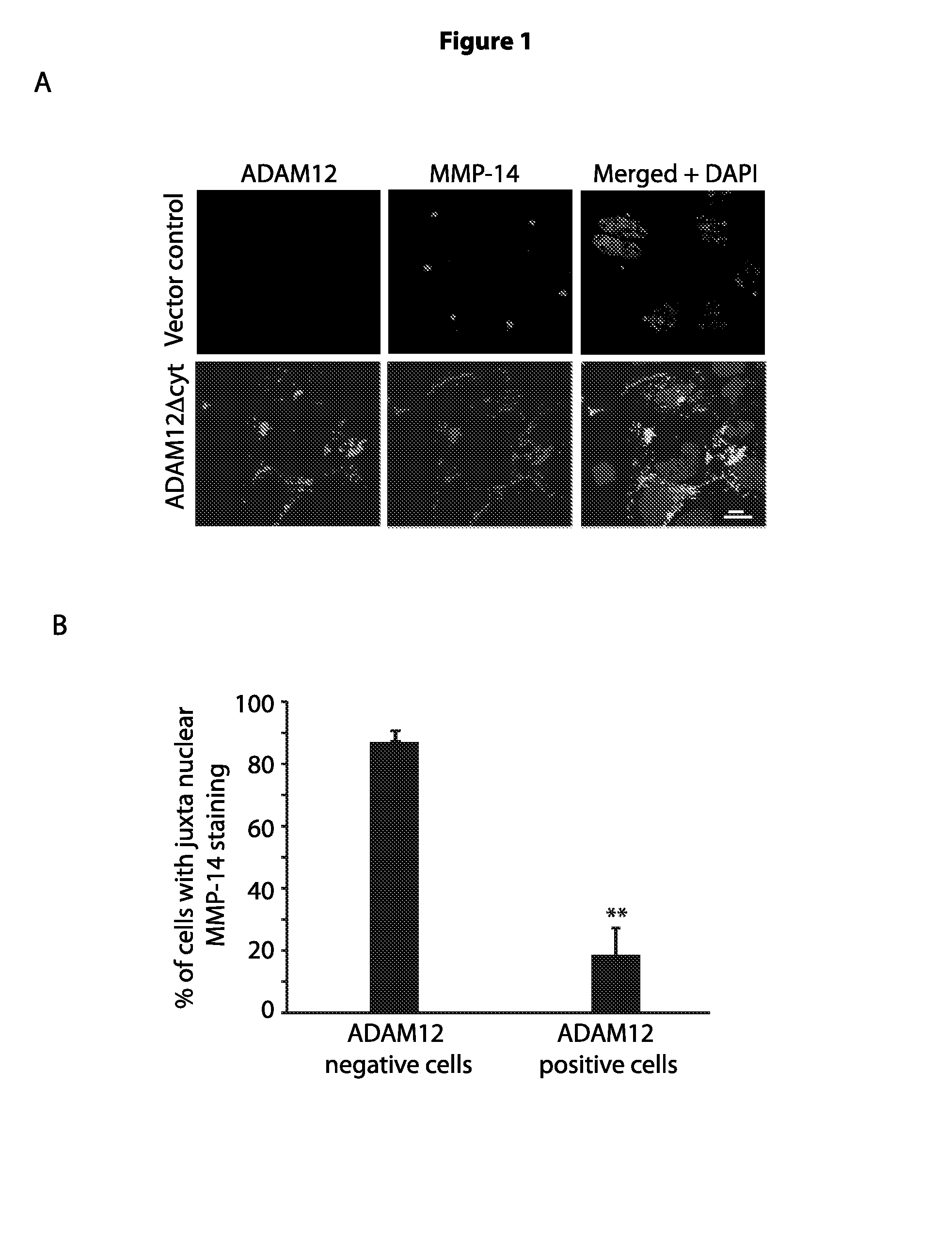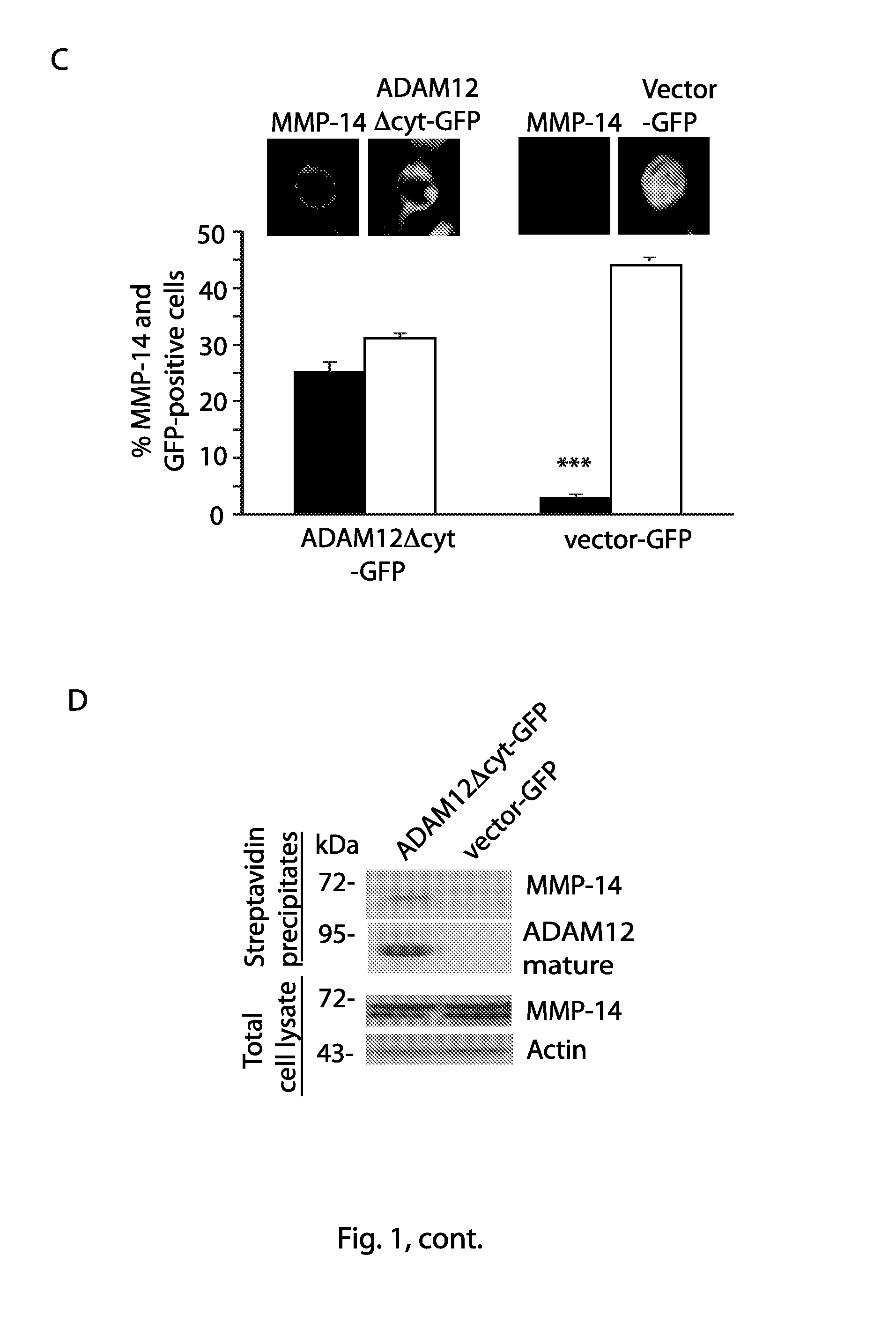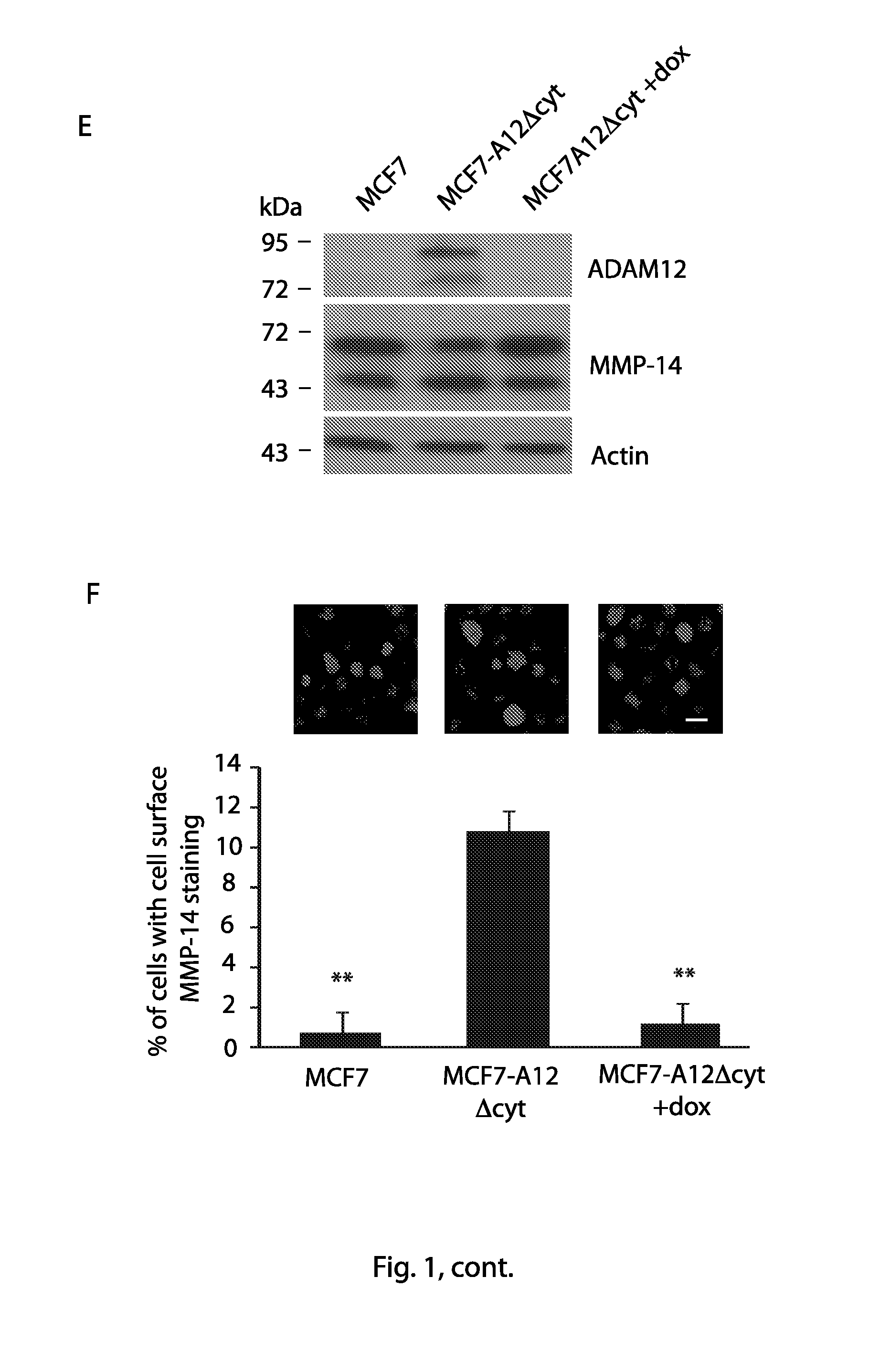Anti-ADAM12 antibodies for the treatment of cancer
a cancer and domain specific technology, applied in the field of domain specific antiadam12 antibodies, can solve the problems of ineffectiveness, unwanted side effects, failure of inhibitors in clinical trials, etc., and achieve the effects of inhibiting tumour cell apoptosis, high upregulation, and accelerating tumour cell proliferation
- Summary
- Abstract
- Description
- Claims
- Application Information
AI Technical Summary
Benefits of technology
Problems solved by technology
Method used
Image
Examples
example 1
Antibodies and Chemicals
[0249]Antibodies against ADAM12 (binding to the prodomain of ADAM12), 6E6 (binding the disintegrin / cycstein.rich domain) and polyclonal rabbit rb122 (raised against the cysteine-rich domain) were previously described (Sundberg et al., 2004, Gilpin et al., 1998). Furthermore, mouse monoclonal antibodies against ADAM12 (7B8, 7C4, 7G3, and 8F10) were generated in this study as described (Sundberg et al., 2004). Briefly, full-length ADAM12-S was produced by HEK293, purified and then used to immunize mice. Hybridomas were generated by fusing mouse spleen cells and a mouse myeloma cell line (NS-1). The single cell hybridomas were expanded and selected for producing ADAM12 mAbs using immunofluorescence. In brief, COS-7 or HEK293 or 293-Vnr cells were transfected with a construct encoding ADAM12-L, conditioned media from the hybridomas was added and visualized by a fluorescence-tagged secondary Ab. Subsequently, the best producing hybridomas were subcloned, and selec...
example 2
MMP-14 Recruitment to the Tumour Cell Surface is Stimulated by ADAM12
[0262]To investigate if ADAM12 affects recruitment of MMP-14 to the cell surface, we took advantage of a HEK293 cell line that stably expresses αVβ3 integrin, called 293-VnR (Sanjay et al., 2001). Immunostaining of endogenous MMP-14 in 293-VnR cells demonstrated a dot-like localization close to the nucleus in nearly 90% of the cells, while very few cells exhibited MMP-14 staining at the cell surface (FIG. 1A, upper panels and FIG. 1B). However, upon transfection with ADAM12Δcyt, which lacks the cytoplasmic tail and therefore is readily directed to the cell surface (Hougaard et al., 2000), cells exhibited MMP-14 immunostaining at the cell surface (FIG. 1A, lower panels), and the number of cells with dot-like MMP-14 immunostaining decreased significantly (FIG. 1B). The effect of ADAM12 on MMP-14 immunolocalization was subsequently assessed in cytospin experiments, where specifically cell-surface localization is analy...
example 3
ADAM12- and MMP-14 Co-Localization at the Tumour Cell Surface Induces Gelatin Degradation
[0265]The spatial relationship between ADAM12 and MMP-14 at the cells surface was analyzed using the Duolink technique (briefly described in Material and Methods) in the 3 cell lines examined in FIG. 1. The Duolink experiments were performed on non-permeabilized cells, and colocalization of ADAM12 and MMP-14 was visualized as bright white dots at the cell surface (FIG. 3A). ADAM12 and MMP-14 colocalized at the cell surface independently of whether ADAM12 was exogenously or, as in MDA-MB-231 cells, endogenously expressed (FIG. 3A).
[0266]Next, we asked whether the ADAM12-mediated change in subcellular localization of MMP-14 resulted in altered biological activities characteristic of MMP-14. A gelatinolytic assay was used to test the matrix-degradation activity of 293-VnR cells under various experimental conditions. Gelatin degradation was defined as disappearance of gelatin fluorescence, leaving b...
PUM
| Property | Measurement | Unit |
|---|---|---|
| Time | aaaaa | aaaaa |
| Time | aaaaa | aaaaa |
| Time | aaaaa | aaaaa |
Abstract
Description
Claims
Application Information
 Login to View More
Login to View More - R&D
- Intellectual Property
- Life Sciences
- Materials
- Tech Scout
- Unparalleled Data Quality
- Higher Quality Content
- 60% Fewer Hallucinations
Browse by: Latest US Patents, China's latest patents, Technical Efficacy Thesaurus, Application Domain, Technology Topic, Popular Technical Reports.
© 2025 PatSnap. All rights reserved.Legal|Privacy policy|Modern Slavery Act Transparency Statement|Sitemap|About US| Contact US: help@patsnap.com



